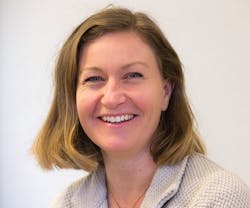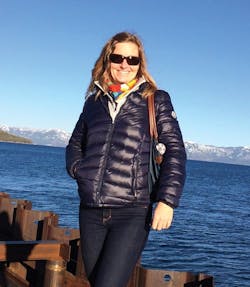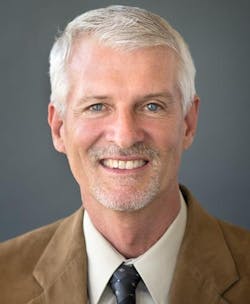2016 Control Process Automation Hall of Fame welcomes new inductees
Our 2016 inductees to the Control Process Automation Hall of Fame hail from the conventionally opposite sides of the process control preparation and education kingdom: one began as a chemical engineer, the other in electrical engineering.
Both have gone on to not only take up the considerable body of knowledge and lore required to master the nuances of the process automation discipline, but to advance it (in very different ways), and pass it on to the next generation.
Both were also enthusiastically nominated and selected by the existing members of our Process Automation Hall of Fame. And as you’ll see on the following pages, each presents an admirable example of how one person can influence and inspire others to strive and excel in their chosen field.
The experiential professor
Our first 2016 inductee came to the process control profession through a love for mathematics, finds satisfaction in seeing how variables and equations can be used to improve processes (and people), and has devoted herself to bringing the benefits of multicultural interaction to her students and family.
Charlotta Johnsson, associate professor, Department of Automatic Control, Lund University, Lund, Sweden, obtained her M.Sc. in electrical engineering at Lund University with her master’s thesis on sequential control languages and their use in batch control. “I was into mathematics and logics and found control to be an inspiring profession,” Johnsson says.
Charlotta Johnsson, associate professor, Department of Automatic Control, Lund University, Lund, Sweden, obtained her M.Sc. in electrical engineering at Lund University with her master’s thesis on sequential control languages and their use in batch control.
Johnsson earned her Ph.D. in Automatic Control at Lund in 1999 with the thesis, “A Graphical Language for Batch Control.” Along the way, she studied sequential control and spoke with people at conferences. “I got into sequential languages during the S88 development, and became part of the ISA88 and World Batch Forum (WBF) communities, which are now part of MESA,” she says. “I enjoyed that, from the pure math to the practical applications to developing standards.”
At the conferences, “I met with an interesting company in Genoa, Italy—Orsi Automation—so I applied with them and moved to Italy. By then, we were a family with my one-year-old daughter,” Johnsson says. After about a year, Orsi developed a batch system MES product, which led to the company being purchased by Siemens.
Johnsson remained with Orsi, now part of Siemens, for another four years as a systems architect and product manager. “I enjoyed the group work, developing software—it was very inspiring—but after five years I wanted to go into research,” Johnsson says. “Also, my daughter was reaching school age and we wanted her to go to school in Sweden, so that drew us back. That and the relatives.”
Johnsson returned to Lund University, this time as a senior research associate in automatic control, and rose to associate professor in 2007. Recent years have included stints as a visiting scholar at the University of California at Berkeley’s Center for Entrepreneurship and Technology and as an adjunct professor of control science and engineering at Zhejiang University, Hangzhou, China.
“My research as always been driven by my own curiosity combined with industrial needs and interest,” Johnsson says. “Today, my research can be divided into four areas: Automation-Control, Technology Management-Engineering Leadership, Innovation-Entrepreneurship, and Teaching and Learning in Higher Education.” Her focus on automation and control includes manufacturing operations systems (MOS), interoperability, plantwide perspectives and operational excellence.
“My research interest in the domain of Technology Management-Engineering Leadership started with my role as program director for the Technology Management Master program, a program that contains strong elements of leadership and innovation,” Johnsson says. “I am curious about the transformational journey from student to a developed leader and/or entrepreneur. This curiosity is closely linked to pedagogical issues, i.e. the research domain of Teaching and Learning in Higher Education.
“As a visiting scholar at the Center for Entrepreneurship and Technology at UC Berkeley, I actively participated in the research and development of the Berkeley Method of Entrepreneurship (BMoE). I’m currently involved in four major research projects: Lund Centre for Control of Complex Engineering Systems (LCCC), Process Industrial Centre Lund University (PICLU), Process Industrial Centre (PIC) and Line Information Systems Architecture2 (LISA2). I’m involved in the development of industrial standards ISA95 and IEC 62264 (MES), ISA88 (Batch) and ISO 22400 (KPIs). I’m also involved in the Global Venture Lab at UC Berkeley.”
Shown here by Lake Tahoe in California, Charlotta Johnsson keeps up her tradition of skiing for a week or two every year. She also enjoys playing tennis year-around, as well as dancing and running.
Johnsson has three children, ages 17, 14 and 9 years, and the family likes to travel. “In summer we often go to the Mediterranean area, and in winter we always go skiing, but we have also been in the United States as well as China,” she says. “There is so much to discover and so many nice places and cultures to visit. You always learn a lot.”
Johnsson has always enjoyed teaching and being among students. “Most fascinating is to see the students’ motivation and driving force, how much they can learn and what excellent work the students can perform,” she says. “I have experience in teaching undergraduate and graduate students as well as industry representatives (in groups from three to 200) in both semester courses and day-long seminars.”
She led the organization of a joint course for Lund technology management students and students from Zhejiang University, China. “The course intertwined leadership and technology in four dimensions: students, teachers, subjects and cultures,” Johnsson says. “It has always been important to me to stay in touch with the national and international industries and organizations within my research and teaching field.” She is currently active in Sesam-Sweden, MESA, ISO, IEC, IFAC, ISA and more.
As an undergraduate, Johnsson was an exchange student for a year at Institut National Polytechnique de Grenoble in France, and she spent time as a Ph.D. student at Purdue University in the United States. Travel remains an important part of her life experience. “I traveled as an exchange student in France, the years in Italy, in California and at Purdue in Indiana, and two months in China,” she says. “When you stay for a longer period of time, you see everyday life, how people live and work.”
As a professor, Johnsson seems especially adept at the interfaces among automation technologies and the students, operators and managers who must understand and harness it. “Over the years, I have been working in academia as well as in industry. Research and development concerning automation systems and the related software tools has been my main focus—what functionality should they offer?” she says. “Today, I have a strong interest in the interoperability of business and automation. How should they interoperate and communicate between each other? The business and automation tools and software used in a process plant should be a support for the workers, to make the production happen in a smooth way, and much can still be done in making the tools and software work better together. A key aspect today is therefore to assure easy integration, and to develop appropriate interfaces. My involvement in ISA95 is about that.”
She sees her major contribution to the field as “education of undergraduate and graduate students as well as people working in industry,” she says. As the educational chair of WBF, “I organized many web seminars that were broadcasted to a wide audience of professionals active in the industry. I was also the chairman of the European conferences for some years, enabling people in the field to get to together, discuss and share ideas. At both European and American conferences, as well as to individual companies, I’ve given several tutorials about batch control as well as enterprise-control integration.”
Within the academic world, she introduced a new course incorporating standards of relevance to process control and automation. The course also includes practical work with industrial process control systems. “I also had the opportunity to work with students with non-technical backgrounds—management students—to give them an understanding of why it’s important to have interoperability between enterprise and automation systems, as well as why feedback plays an important role in many process industrial plants.”
Johnsson also highly values her involvement in the ISA, ISO and IEC communities (and the Swedish mirror committees SEK and SIS), “being part of the working groups and thereby contributing to the development of new international standards, standards that will have an effect on what and how automation is dealt with in industry,” she says. “The ISA95 standard has been widely accepted and is used by many vendors in their development of their product offerings, and by end users for specifications of their control/MOM requirement. The ISA95 standard, also known as IEC 62264, is often brought up as an important reference material when speaking about emerging concepts such as Smart Manufacturing and Industry 4.0.”
Johnsson would like to see more interaction between industry and prospective engineering students. “Many students are entering the university with a non-industrial background—many have not been in the working force prior to entering the university. The university is providing them with tools that they can use when graduating and starting their career, but I believe it is important to also give them, while at the university, an understanding of why the tools are useful,” she says. “Many students know how to tune a PID controller, but don’t know how many of them there are in a typical plant and the economical impact well-tuned vs badly tuned controllers have. Inviting guest lecturers from industry, including work-life practice such as projects with an industrial partner, can help students get a better understanding of the importance of automation and control. I believe in more touch-points between students and potential employers during the time at the university.
“In addition, there is work that should be done starting much earlier. Giving children and teenagers role models from the process industry is important. At our university, we have a science center where schools and families can familiarize themselves with science and meet people who are working with related issues. We have a ‘robotics-week’ when our robotics lab is open for school students. They are often fascinated at what they see, and start to speak about what they could and would like to see happening with robots in the future. For many, this is the first interaction with engineering and robotics. My dream would be to have a ‘process industry week’ where we could have a small demonstration process plant, and be able to show what fascinating things you can make by using control and automation systems.”
- One PhD thesis and one licentiate thesis
- 20-plus articles in refereed international journals and books/reports
- 70-plus papers at international conferences (peer-reviewed). Of these:
- 15-plus focused on pedagogical issues
- 25-plus have cross-disciplinary co-authors
- 10-plus have an innovation focus
- 10-plus have co-authors from industry
- 20-plus other publications (reports, whitepapers, press-articles, etc.)
- 20-plus invited presentations, mainly in industry
A man of first principles
Our second 2015 inductee is also a professor, runner and skier, but came to process control from what many see as the other direction: chemical engineering. We are pleased to welcome James B. Rawlings, professor, University of Wisconsin, to our Hall of Fame.
Rawlings graduated as a chemical engineer from the University of Texas (UT) in 1979, and earned his PhD in chemical engineering at the University of Wisconsin (UW) in 1985, working on polymer modeling with W. Harmon Ray. Ray also had a group involved in process control. “I found the control field to be a very interesting place,” Rawlings says.
James B. Rawlings, professor, University of Wisconsin, graduated as a chemical engineer from the University of Texas (UT) in 1979, and earned his PhD in chemical engineering at the University of Wisconsin (UW) in 1985, working on polymer modeling with W. Harmon Ray. Ray also had a group involved in process control.
So in 1985, Rawlings took his PhD to the Institute for System Dynamics and Process Control, University of Stuttgart, as a NATO Postdoctoral Fellow. Over the next year, he experienced an educational system that was “quite different, with fewer classes and more research focus,” he says. “I met many PhD students, and made many contacts that have been very valuable for collaboration throughout my career and remain so today. It’s a great institution and was a great experience for me.”
During those years, with Ray and other co-authors, Rawlings wrote half a dozen papers on modeling and control of emulsion polymer reactors and related processes with titles including “Stability of continuous emulsion polymerization reactors: a detailed model analysis,” “Modeling and control of dispersed phase systems,” and “The modeling of batch and continuous emulsion polymerization reactors.”
Rawlings returned in 1995 to UW as a professor and is now Paul A. Elfers and W. Harmon Ray Professor of Chemical and Biological Engineering.
He describes the connection from chemical engineering to control engineering as obvious. “Reaction engineering feeds into control engineering,” Rawlings says. “Model-based predictive control [MPC] and optimization rely on a good model. The more you know about the chemical reactions taking place, the better the process knowledge, the better the control.”
Rawlings sees his major control contributions as being in MPC—to its underpinning theory and computations, and how it can be used with multiple controllers in distributed MPC to optimize groups of unit operations, as well as optimize for non-process variables such as economics. He is also proud of his role in defining techniques for state estimation and for making the connection to MPC.
“My main control research interests are developing the theory and design methods for model predictive control and moving horizon state estimation,” Rawlings says. “One of my motivations as a beginning researcher was to enable users with physical (usually nonlinear) models to use them directly in the controller design. Of course, that was a goal of the field of optimal control from its inception, and model predictive control provides that same capability.”
Recognizing that chemical processes are inherently nonlinear and must operate at their design constraints to achieve optimal economic performance, he and his group have developed methods of moving-horizon estimation and MPC. “This research has provided new theoretical results as well as practical, implementable methods for industrial applications,” Rawlings says.
James Rawlings is an avid golfer, cross-country skier, and runner. “In Madison, we have a climate with a season for each,” he says. He was a track and cross-country runner as an undergraduate at the University of Texas. “Now I just run for fun and to get in shape for ski season.”
As ski season winds down, golf begins. “I play in a golf league, and we have nine-hole matches every Tuesday evening at a local public course,” Rawlings says. The Badger Men’s Golf League fields 32 two-man teams. “My partner Jeff Lindroff is an optimization expert in Industrial and Systems Engineering,” he says. “Our team has won the league championship three years in a row.”
On a trip to Copenhagen, Denmark, in 2011 to receive an honorary Ph.D. from the Danish Technical University, Rawlings visited a local windmill-shaded course and performed this flop shot.
In the area of computational modeling, Rawling’s group has developed Octave, a freely available, high-level computer language for numerical simulation and analysis of chemical engineering models. “We use Octave to define models quickly, compute and analyze solutions, estimate model parameters from data, and solve controller design problems,” he says.
While teaching courses and directing research, Rawlings works with industrial companies including ExxonMobil, Praxair, Shell and Johnson Controls. “Our industrial contacts operate chemical plants, and most of the problem applications are chemical processes.”
Rawlings is one of three UW faculty representatives in the Texas-Wisconsin-California Control Consortium (TWCCC), which carries out joint industrial-academic research in the areas of chemical process modeling, monitoring, control and optimization. TWCCC was established in 1993 in the Department of Chemical Engineering at UT, and expanded in 1995 to include UW. In 2007, the consortium added the University of Southern California. It includes leading chemical, microelectronic and pharmaceutical companies, giving graduate students opportunities to interact with industrial collaborators, and present research results at consortium meetings.
Along with articles and papers too numerous to describe, Rawlings is co-author of three books: “Chemical Reactor Analysis and Design Fundamentals, 2nd Edition”, “Model Predictive Control: Theory and Design,” and “Modeling and Analysis Principles for Chemical and Biological Engineers."
“Given better fundamental tools of control theory and design coupled with tremendous advances in inexpensive computing, we can do amazing things with feedback control compared to even a few years ago,” Rawlings says. “Many of the applications, such as smart power grids and other large-scale networked systems like supply chains and water supply systems are widely recognized as key societal challenges.”
As an educator, Rawlings is sanguine about the supply of process control talent. “Any perceived shortage of engineers is a transient that will be corrected by the economy. As the salaries of data analysts and engineers go up, students will react and the market will correct the shortage,” he says.
At the same time, he doesn’t think students should choose chemical engineering just because of the good jobs or because their parents push them into the field. “The student has to have ownership of his or her choices,” Rawlings says. “Among the chemical engineering students I advise, the ones who are least happy are the ones pushed into the major by their parents.”
As a man of his principles, “I tried to expose my own children to a broad range of options, and told them to find what they love doing—and hopefully something that society will pay you to do,” Rawlings says. His daughter studied biochemistry at UW and is now a dentist. Her younger brother is working on his PhD in control theory at Carnegie Mellon.
Looking forward, today’s most interesting technological trend is “automated decision-making,” Rawlings says. “Take driverless cars. A few years ago, people were shocked at the idea, but we’re seeing increasing applications of automating decisions under uncertainty.” We see it now in areas from supply chain logistics and airplane routing to Google’s movie recommendations. “Automated decision-making is the essence of control, of automation,” he adds. “The models change, what you do changes, but the essence is the same.
“We’ll be using and expanding the levels of these automated decision-makers. It’s growing incredibly fast.”
- National Academy of Engineering (2016)
- Vilas Distinguished Achievement Professor, UW Madison (2015)
- Centennial Lecturer, McKetta Department of Chemical Engineering, The University of Texas (2015)
- Computers and Chemical Engineering 2012 Best Paper Award (2013)
- Simon Stevin Lecturer, KU Leuven (2013)
- Nordic Process Control Award (2013)
- Chancellor’s Distinguished Teaching Award, UW Madison (2013)
- Elected Fellow, IEEE (2012)
- WARF Named Professorship, Graduate School, UW Madison,
- W. Harmon Ray Professor of Chemical and Biological Engineering (2012)
- “Doctor technices honoris causa,” Technical University of Denmark (2011)
- Inaugural High Impact Paper Award, International Federation of
- Automatic Control (2011)
- John R. Ragazzini (Education) Award, American Automatic Control Council (2011)
- Harvey Spangler Award for Technology Enhanced Instruction,
- College of Engineering, UW Madison (2010)
- Bayer Lecturer, Carnegie Mellon University (2010)
- Elected Fellow, AIChE (2009)
- Excellence in Process Development Research Award, Process
- Development Division, AIChE (2008)
- Byron Bird Award for Excellence in a Research Publication, College of Engineering, UW Madison (2005)
- Computing in Chemical Engineering Award, CAST Division, AIChE (1999)
- Van Ness Lecturer, Rensselaer Polytechnic Institute (1999)
- Paul A. Elfers Chair in Chemical and Biological Engineering,
- UW Madison (1995-2015)
- Presidential Young Investigator, National Science Foundation (1989)
|
2001
|
2002 |
|
2003
|
2004 |
|
2005 |
2006
|
|
2007
|
2008 |
|
2009
|
2010 |
|
2011
|
2012 |
|
2013
|
2014 |
|
2015
|
2016 |

Leaders relevant to this article:








